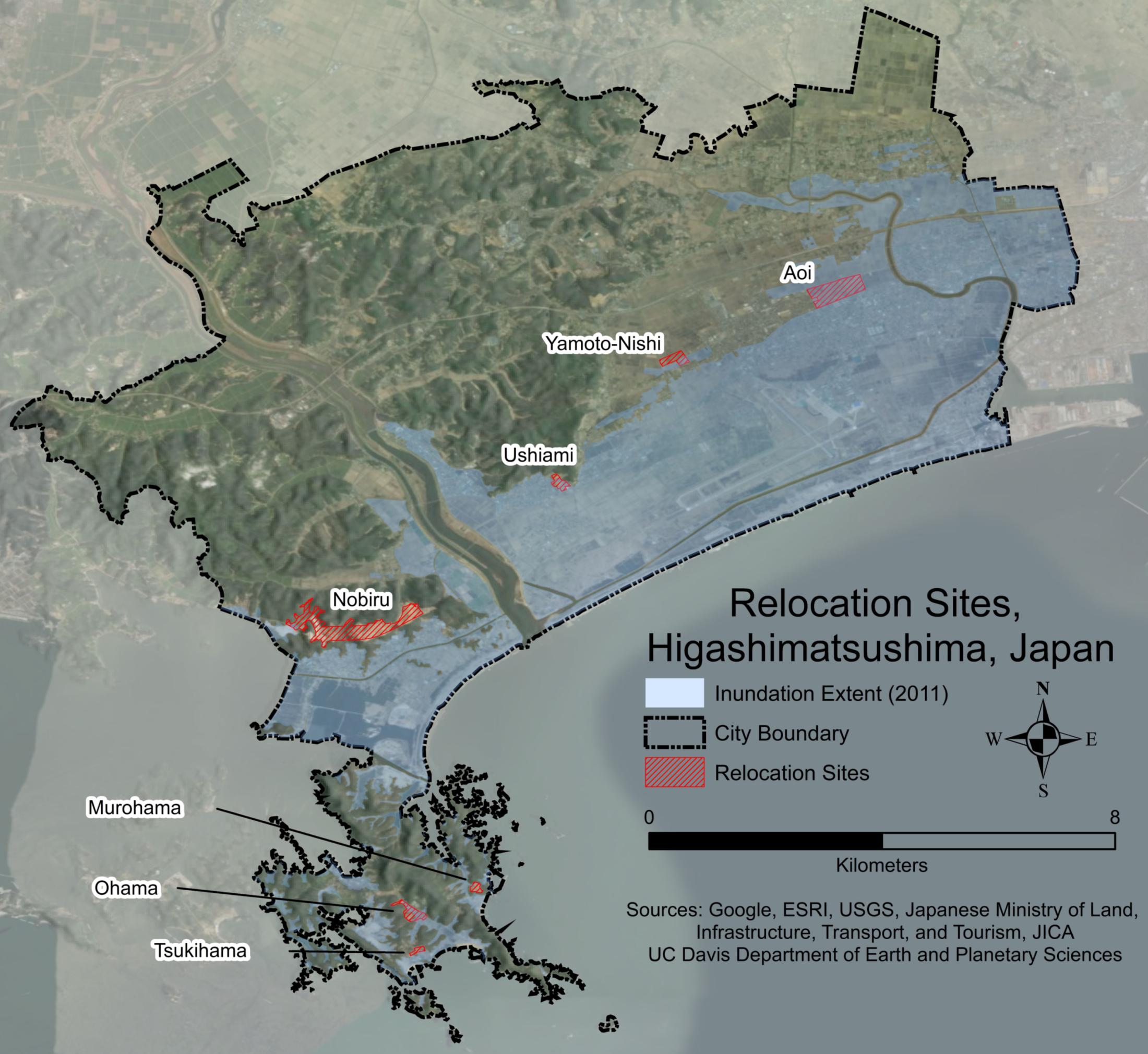Large-Scale Managed Retreat and Structural Protection following the 2011 Japan Tsunami
(Excerpted from: Pinter, N., M. Ishiwateri, A. Nonoguchi, Y. Tanaka, D. Casagrande, S. Durden, and J. Rees, 2019. Large-scale managed retreat and structural protection following the 2011 Japan Tsunami. Natural Hazards, 96: 1429-1436.)
Introduction
On March 11, 2011, a magnitude MW 9.0 thrust earthquake ruptured the Japan Trench along the northwest coast of Honshu and generated a tsunami that killed 15,894 people, left 2,585 missing (as of March 2017) and destroyed more than 130,000 houses. New structural protections built in Japan since 2011 include a massive concrete-lined tsunami barrier system, stretching >400 km of coast, at a cost of at least $8 billion. Japan's post-tsunami disaster response may represent the single largest case of disaster-related managed retreat in recent world history. Approximately 145,000 homes, including whole new towns, are being built outside the tsunami hazard zone. Disaster managers worldwide should look to Japan for lessons learned from the investment and efforts since 2011.
2011 Earthquake and Tsunami
The 2011 Tohoku earthquake and tsunami caused economic losses estimated at ¥16.9 trillion (approximately $210 billion), or about 4% of Japan’s gross domestic product (GDP). Wave run-up reached as high as ~40 m and extended as far as 10 km inland. Damages to housing, commercial and industrial facilities, machinery, etc. are estimated at ¥10.4 trillion, or 62% of the total damage. The tsunami destroyed 130,000 houses and severely damaged another 270,000 residences. Immediately following the tsunami, more than 470,000 people were housed at evacuation centers. Many residents remained in these centers for months and in some transitional shelters for years. As of September of 2017, 80,000 evacuees remained displaced (Japan Reconstruction Agency, 2017). Post-tsunami recovery continues today, with ¥32 trillion (approx. $265 billion) allocated for reconstruction and protection efforts, with a planned completion date of 2020.

Relocation Efforts
One of the hallmarks of Japan's recovery from the 2011 tsunami is a sweeping relocation program. With ~400,000 structures destroyed and about half a million people displaced, the central government forbade residential reconstruction within the most hazardous of the area impacted by the 2011 tsunami. Numerous small villages as well as urban housing areas were declared off-limits to residential use in perpetuity; selected reconstruction of commercial and industrial properties was allowed. To replace the housing lost to the tsunami, approximately 145,000 residences are being reconstructed in higher areas with government financial support.

Coastal Protection and Risk Management
The 2011 tsunami destroyed or severely damaged 190 km of seawalls and other coastal protection structures in the Tohoku region. In addition to relocations following 2011, Japan has been reconstructing the tsunami protection system, including significant additions and enlargement to structures along 457 km of coastline. At an estimated cost of at least $8 billion, the project has been called "the Great Wall of Japan”. In fact, the impressive concrete coastal structures now being constructed are envisioned as part of a broader "zone defense" (Figure 3), including roads and other structures as secondary tsunami barriers.

Conclusions
Natural disasters are milestone events that often reshape national policy. The Tohoku tsunami in 2011 was a truly catastrophic event, with transformative impacts on the Japanese psyche and on disaster recovery and preparedness investments and policies. After the 2011 tsunami, the Tohoku coastal margin has been largely depopulated of residents. Community relocations have been a central part of that post-tsunami retreat, providing housing for survivors and keeping communities intact to the extent possible. Planners and policymakers in the US and worldwide should be looking to Japan for lessons learned that can be adapted to local needs.